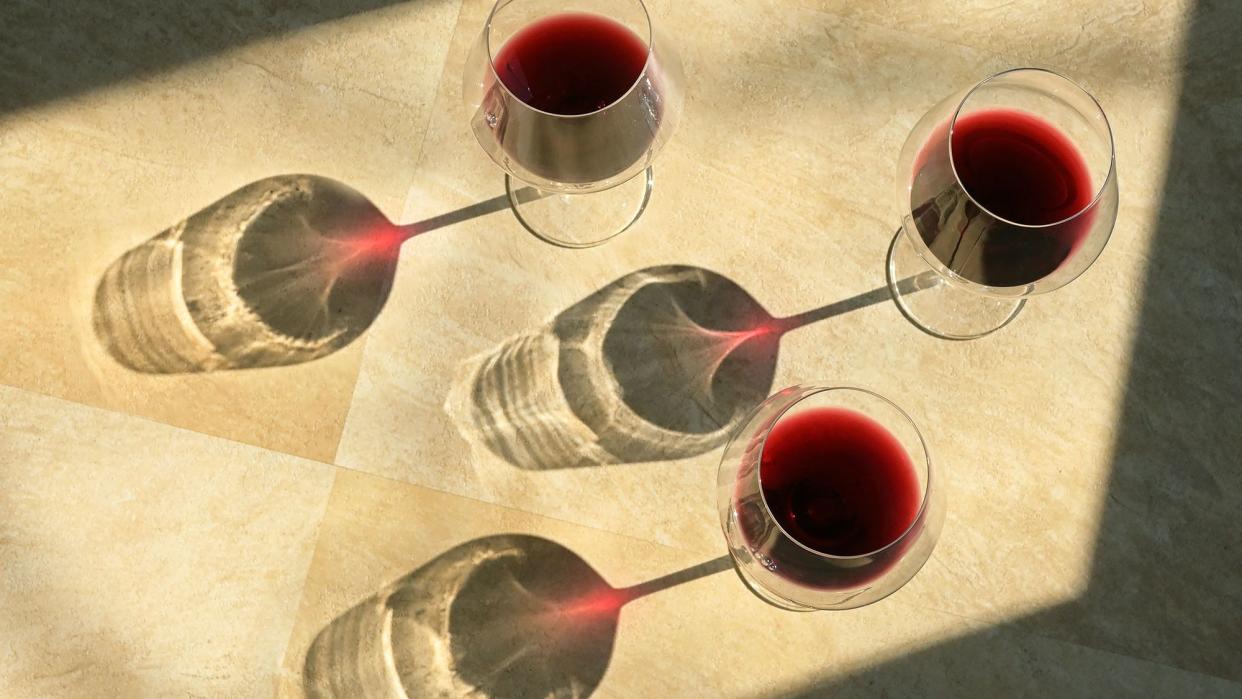Everything You Need to Know About Barolo

Shutterstock
Barolo, the old expression goes, is the wine of kings and the king of wines. It is a classic example of synergy between a specific grape variety (in this case, Nebbiolo) and a particular place. Located in the Langhe, which is found in the Cuneo province of Piedmont in Northern Italy, Barolo is responsible for some of the longest-lived and most collectible wines in the world. To fully appreciate all that this magnificent wine has to offer, check out our Barolo wine guide below.
What Is Barolo Wine?
Barolo is a wine produced in the appellation of the same name. It's located in Northern Italy's Piedmont region and is required to be made exclusively from the Nebbiolo grape variety. Nebbiolo, of course, is also grown in other countries around the world, but Barolo can only come from the Barolo DOCG (Denominazione d'Origine Controllata e Garantita), and must be produced following a strict set of rules and regulations, most notably that it be composed entirely of Nebbiolo that was grown on hillsides.
Where Does Barolo Wine Come From?
Much like Champagne can only come from the Champagne region of France, Barolo can only come from the appellation of the same name in the Piedmont region of Northern Italy. Yet even within Barolo itself, there are significant demarcations, including 11 communes. Among the most important of the Barolo communes are Monforte d'Alba, La Morra, Castiglione Falletto, and Serralunga d'Alba. Beyond the 11 communes, there is also a system of MGAs, or in Italian, Menzione Geografica Aggiuntiva, which specify unique places within the communes whose Nebbiolo results in particularly idiosyncratic or notable Barolo.
Why Should You Drink Barolo Wine?
Barolo is one of the most prestigious, age-worthy, and collectible wines in the world. Like so many of the greats, Barolo is a fascinating expression of a particular place as experienced through the lens of a consistent grape variety. In that regard, there are many compelling similarities between Barolo and Burgundy, the latter of which is a highly demarcated region where minute differences in terroir and micro-climate affect the character of the Pinot Noir that grows there.
The history of Barolo goes back hundreds of years. According to most sources, Nebbiolo's roots track back to the 1200s, but Barolo, as we are familiar with it these days, is quite a bit younger, only stretching to the middle of the 19th century. Regardless, it is widely agreed to be one of the most important red wines in the world.
Barolo is a wine that rewards patience. You can drink them in their youth, especially after a stint in the decanter and with vigorous swirling in the glass, but great Barolo expresses itself most profoundly with several years of age. That doesn't mean that you should hold onto every bottle of Barolo for decades — each vintage is different, as are the farming and winemaking techniques employed by producers throughout the appellation — but in general, giving Barolo at least three to five years before popping the cork is a good idea. Barolo made in a modern style, with more ripe fruit and greater oak influence, tends to be a bit more generous earlier, whereas traditionally styled Barolo often needs longer to reach its full potential.
When it comes to pairing Barolo with food, there is no more classic combination than savoring the wine alongside a simple dish of pasta with shaved white truffles on top. During truffle season in Piedmont, which tends to run from October to December each year, establishments all over Piedmont feature this quintessential combination. If you don't have access to fresh white truffles, then truffle oil or truffle salt will work well, too. Sottocenere cheese, which is flecked with pieces of black truffle, is a delicious accompaniment to Barolo. The wine also pairs well with beef and veal, game meats, mushrooms across the spectrum, and even a straightforward platter of cured meats.
What Does Barolo Taste Like?
In its youth, Barolo boasts brambly berries and cherries that are framed by mouthwatering acidity and assertive yet not generally thick tannins. There is often a hint of flowers peeking through, as well as something more savory: All indications of delicious things to come. Spice notes and tobacco are also commonly experienced. With age, however, mature Barolo emerges with notes of tar, roses, mushrooms like truffles and porcini, and fruit in the cherry and mountain-berry family.
Five Great Barolo Wines
There are countless great Barolo wines on the market today. These five producers, listed alphabetically, are a perfect way to start exploring Barolo, and were recommended by renowned wine professional DLynn Proctor.
Bartolo Mascarello
Now helmed by Bartolo's daughter, Maria Teresa, this beloved Barolo producer is responsible for some of the most layered bottlings of Nebbiolo on the market today.
Crissante Alessandria
There are a number of remarkable Barolos produced by Crissante Alessandria, including the Barolo Comune di La Morra, Capalot, and Galina.
Lorenzo Accomasso
Often challenging to find, these wines are well worth the search: From the Barolo Rocche dell'Annunziata to the Riserva, they exist at the very top of many collectors' wish lists.
Massolino
The Barolo Normale is a particularly excellent wine from Massolino. Located in Serralunga d'Alba and crafting fantastic wine since1896, Massolino is one of the greats. Their range of Barolo and Barbaresco is nothing short of phenomenal.
Pio Cesare
Pio Cesare traces its origins back to 1881. In addition to the Barolo Classic, Pio Cesare also produces single-vineyard Barolo as well as excellent Barbaresco, Barbera, and more.

